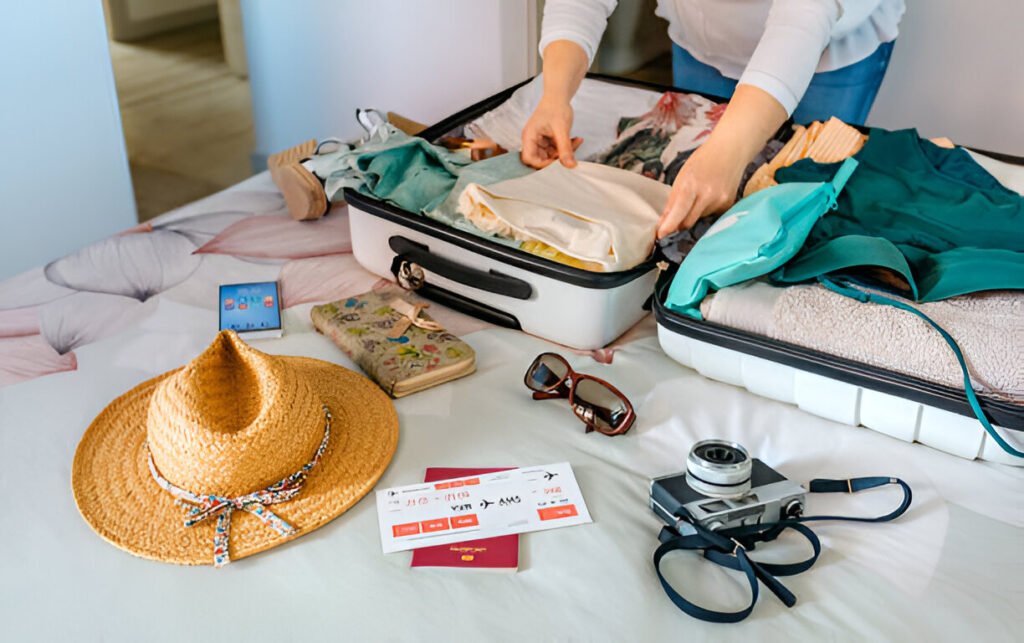How Do Movers Pack Clothes: A Comprehensive Guide
Moving to a new home can be a stressful experience, and one of the most challenging tasks is packing your clothes. If you’re moving, you should pack your clothes well. This will keep your wardrobe in great shape during transit, whether you do it yourself or hire pros.
Preparing Your Clothes for Moving
Before you start packing, do these steps to streamline the process:
- Declutter Your Closet: Begin by sorting through your clothes and deciding what to keep, donate, or sell. Only pack the items that you regularly wear, are in good condition, or hold sentimental value. This step not only reduces the volume of items to move but also gives you a fresh start in your new home.
- Launder Everything: Ensure all your clothes are clean before packing. It will prevent any odours or stains from settling in during the move. Freshly laundered clothes will also make unpacking in your new home more pleasant.
- Sort by Category: Organize your clothes by type—such as shirts, pants, dresses, and seasonal items—before packing. It will make the packing process more efficient and simplifies unpacking at your new location.
- Take Inventory: Create a detailed list of your wardrobe. This inventory will help you track your belongings. It will make it easier to find any missing items after your move.
If you’re looking for professional help with your move, consider hiring experienced movers and packers. They can handle the packing of your clothes and other belongings with care, ensuring everything arrives safely at your new home. For reliable services, check out movers and packers in Dubai.
Packing Methods for Different Types of Clothes
Now that your clothes are sorted and ready let’s look at the various packing methods:
Wardrobe Boxes for Hanging Clothes:
These sturdy boxes have a hanging bar. They’re ideal for transporting clothes that wrinkle easily, like suits, dresses, and coats. Wardrobe boxes let you move your clothes straight from the closet to the box. This keeps them in perfect condition.
Garment Bags:
For high-end garments or delicate fabrics, garment bags offer an extra layer of protection. These bags are easy to carry and shield your clothes from dust and damage. However, they might not be suitable for larger moves due to their limited capacity.
Rolling Racks:
If you have a lot of hanging clothes and need a quick solution, a rolling rack can be convenient. It doesn’t protect as well as wardrobe boxes. But, it lets you move many clothes without packing them into boxes.
Folded Clothes:
For non-hanging items like T-shirts, jeans, and sweaters, folding them neatly is the way to go. The flat fold method suits bulkier items. The military roll method saves space and minimizes wrinkles.
Compression Bags:
These are excellent for bulky items such as winter coats and blankets. Compression bags let you remove excess air. They save space in your clothes and are especially useful for long-distance moves.
Packing Shoes and Accessories
Shoes and accessories require special care to avoid damage:
- Shoes: Stuff each shoe with packing paper to keep its shape. Then, wrap them in packing paper or bubble wrap to prevent scuffs. If possible, use their original boxes or a hard-shell suitcase for protection.
- Accessories: Pack items like belts, scarves, and hats in separate boxes or drawers. Wrap each piece in tissue paper to avoid damage.
Final Tips for Moving Day
- Pack an Essentials Bag: Set aside a bag with some clothes, toiletries, and other must-haves for your first few days in your new home. It will save you from having to dig through boxes immediately after your move.
- Label Everything: Clearly label each box or bag with its contents and the room it belongs in. It will make unpacking easier and ensure that everything ends up in the right place.
Conclusion
Packing your clothes for a move requires a bit of planning, but with the right approach, it can be a straightforward process. Declutter, organize and pack well. It will ensure your wardrobe arrives at your new home in great shape. Whether you do it yourself or hire pros, prepare well. It will make unpacking easier and help you settle in. Remember, the goal is to start fresh in your new space without the hassle of damaged or misplaced items. With these tips, you’ll be ready to move with confidence.
FAQs on Packing Clothes for a Move
How do I pack clothes that I plan to store long-term?
For clothes you won’t use right after your move, store them in airtight plastic containers or vacuum-sealed bags. Ensure the clothes are clean and completely dry to prevent mould and mildew. Adding silica gel packets can help absorb any residual moisture.
What’s the best way to pack delicate fabrics like silk or lace?
For delicate fabrics like silk or lace, use acid-free tissue paper between layers. It will prevent snags and wrinkles. Avoid stacking these items under heavier clothes. Garment bags are ideal for keeping these fabrics in pristine condition during the move.
How can I prevent clothes from getting musty during a move?
To keep clothes fresh, especially if the move will take several days, place dryer sheets or scented sachets in the boxes or suitcases. Ensuring all clothes are dry before packing is also essential to avoid any musty odours.
Should I pack clothes in plastic bags?
It’s best to avoid packing clothes in regular plastic bags, as they can trap moisture and lead to mould or mildew. If you need to use plastic, opt for specially designed garment bags that allow for ventilation.
How do I pack clothes that are still on hangers without using wardrobe boxes?
If you don’t have wardrobe boxes, you can use large trash bags as a budget-friendly alternative—group several hangers. Then, place a trash bag over them, starting from the bottom of the clothes. Finally, tie the bag’s strings around the hanger hooks. This method helps keep clothes together and protected during the move.





